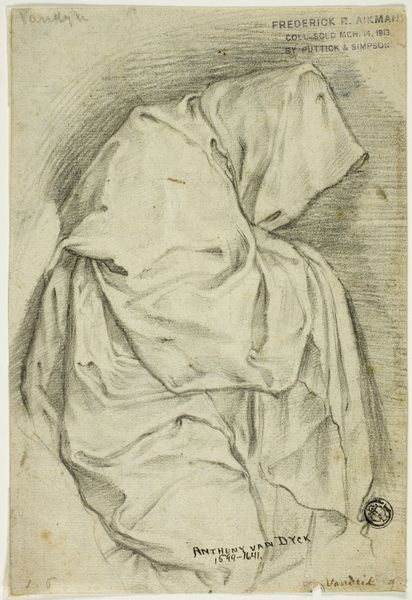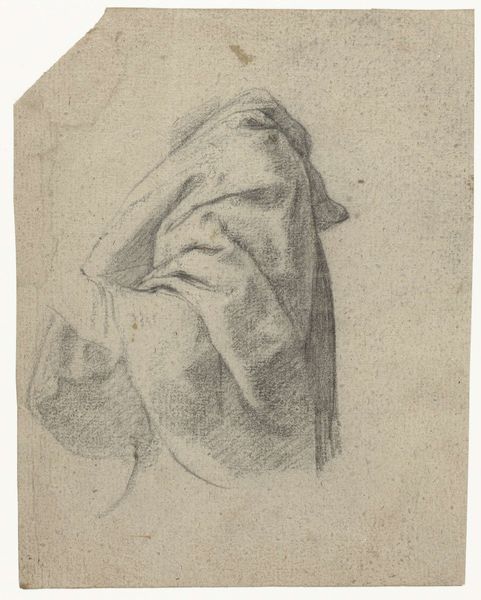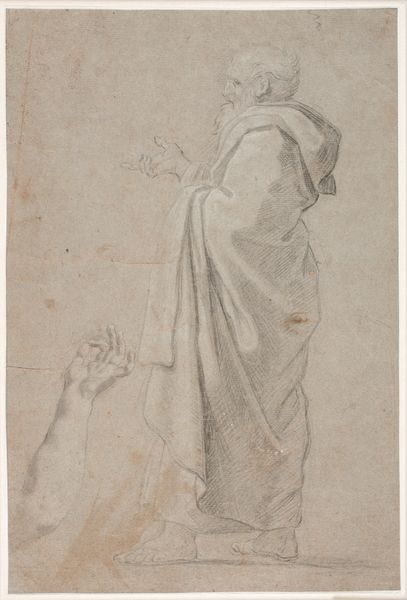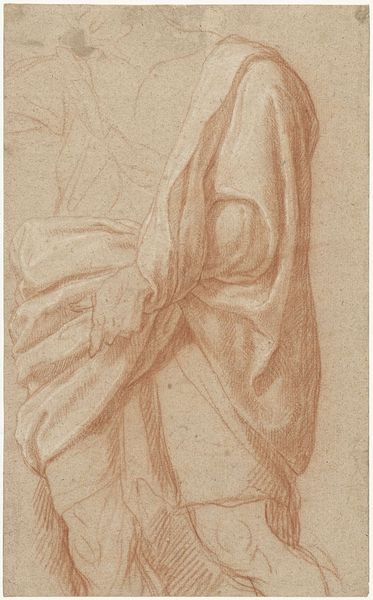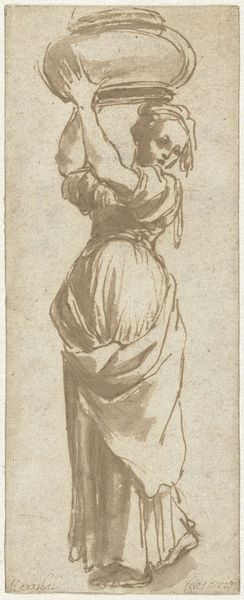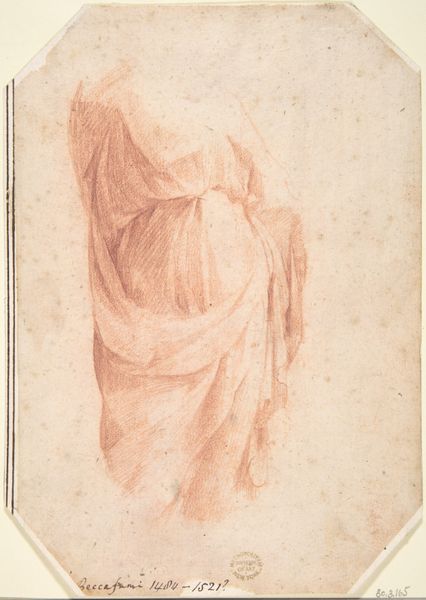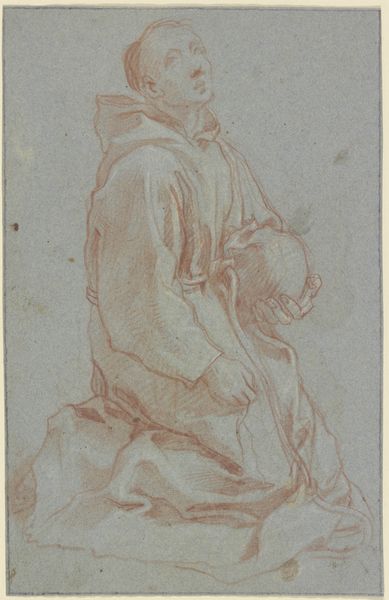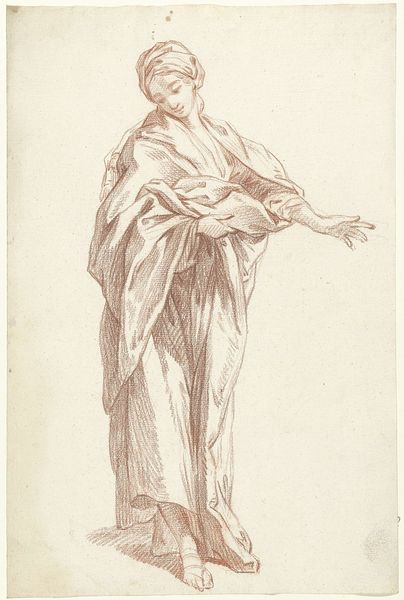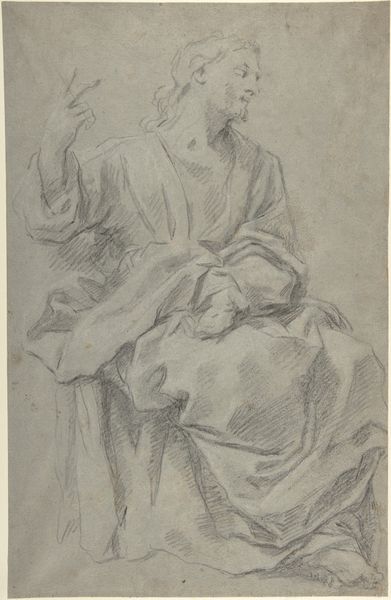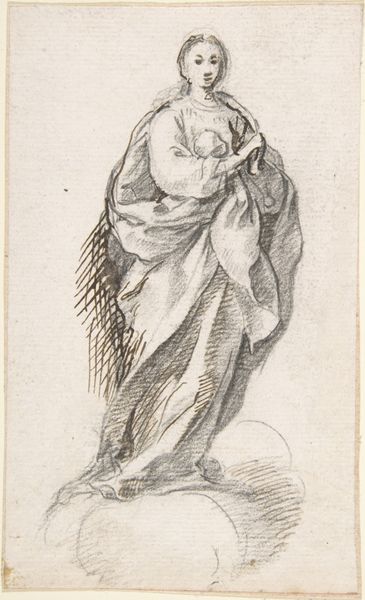
drawing, paper, charcoal
#
portrait
#
pencil drawn
#
drawing
#
charcoal drawing
#
mannerism
#
figuration
#
paper
#
pencil drawing
#
charcoal
#
history-painting
Dimensions: height 288 mm, width 163 mm
Copyright: Rijks Museum: Open Domain
Editor: We’re looking at “Apostel Simon,” a drawing rendered in charcoal and pencil on paper from the late 16th century, created by Joos van Winghe. There’s a sense of gravity to this figure, yet the linework also feels very fluid and expressive. What do you see in the way the composition emphasizes line and form? Curator: The beauty resides significantly in the artist's strategic deployment of chiaroscuro to define form and evoke drama. Note how the deep shadows contrast sharply with the areas of light, particularly on the drapery. This manipulation isn't just representational, it fundamentally sculpts the figure, lending a tangible presence that transcends the two-dimensionality of the paper. Consider how these light and shadow interactions direct our gaze and shape our perception of the figure’s overall stature. Editor: That’s interesting. I hadn't considered how active a role the light plays. Does this interplay create a particular dynamic in the figure's pose as well? Curator: Precisely. Observe how the cascading folds of the garments contribute not just to visual richness, but also serve to echo and amplify the subtle torsion in Simon’s stance. It is within this dynamic, achieved through calculated gradations of tone and directional lines, that the artwork attains its profound aesthetic impact, isn't it? Editor: Yes, absolutely. Focusing on those artistic choices really clarifies how they affect the drawing’s overall impact. Curator: Agreed. Close formal examination allows us to appreciate the technical skill and deliberate design, transcending simple depiction.
Comments
No comments
Be the first to comment and join the conversation on the ultimate creative platform.
